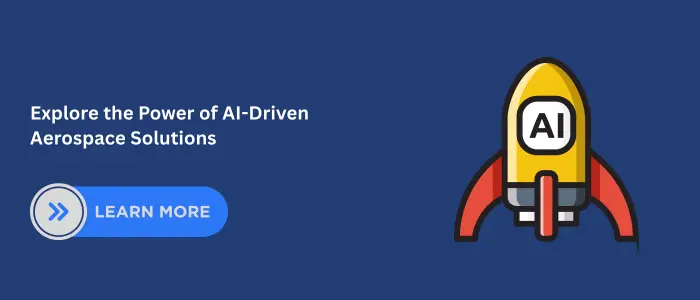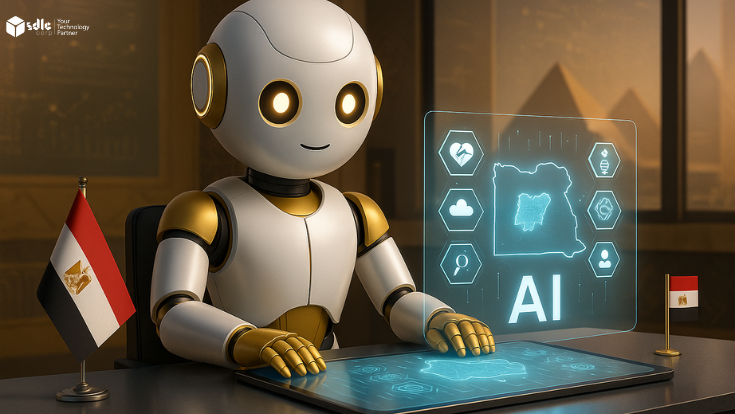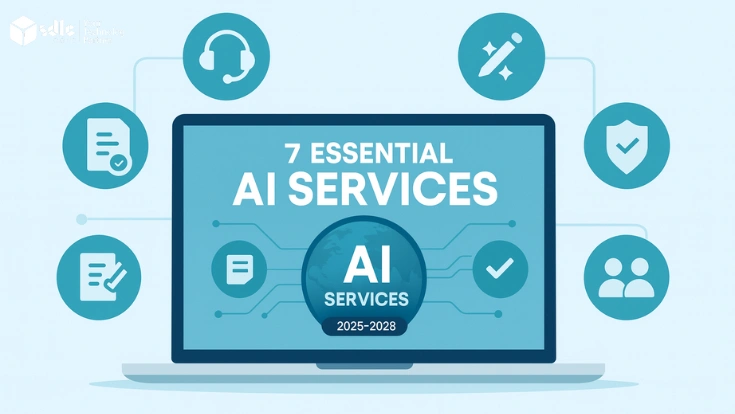Introduction
Generative AI in Aerospace is transforming the industry that has always been known for pushing the limits of technology. From the first airplanes to the latest spacecraft, every advancement has brought humanity closer to exploring the skies and beyond. Now, this powerful technology is becoming one of the most exciting innovations shaping the future of aerospace. With its ability to create new designs, optimize processes, and support better decision-making, it is revolutionizing how aircraft and spacecraft are imagined, built, and operated.
In this blog, we will take a closer look at how generative AI is changing aerospace, why it is essential, and how leading companies are using it to gain a strong advantage. We will also explore the benefits, challenges, and real-world applications that make this technology important for the future of aviation and space exploration.
Role of Generative AI in Aerospace Systems
Aerospace systems generate complex data across design, manufacturing, flight operations, and maintenance. Generative AI can support these environments by summarising engineering documentation, analysing system logs, and assisting with technical knowledge management. Many organisations explore Generative AI development services to build models that can operate within strict safety, reliability, and documentation standards.
1.What is Generative AI in Aerospace?
Generative AI is a type of artificial intelligence that does not just analyze existing information but also creates new outputs. Instead of providing one answer, it generates many possible designs, solutions, and ideas. In aerospace, it is applied to aircraft design, materials testing, flight planning, and even mission simulations. Because aerospace involves highly complex systems, generative AI offers engineers and researchers new ways to speed up processes, cut costs, and improve reliability.
If you are new to this concept, you can read our detailed guide on what is generative AI to understand the basics before exploring its role in aerospace.
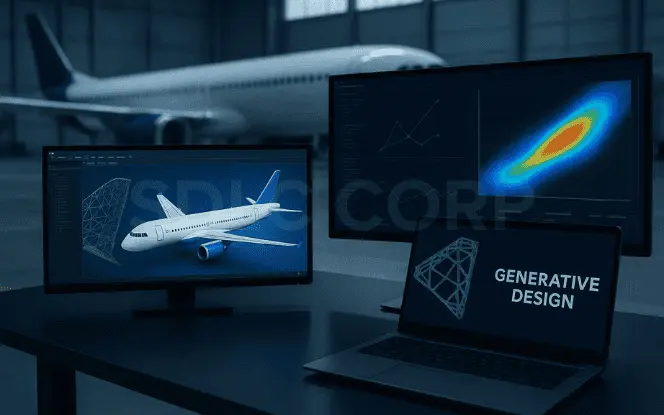
For example, when designing an aircraft wing, engineers need to consider aerodynamics, weight, safety, and fuel efficiency. Traditionally, this process takes months or years. However, with generative AI, engineers can generate hundreds of design variations, test them virtually, and select the best option within days. As a result, innovation moves faster and becomes more cost-effective.
2.Why Aerospace Needs Generative AI
The aerospace sector faces constant challenges. The demand for lower emissions, higher fuel efficiency, and safer operations continues to rise every year. At the same time, space exploration requires innovation that reduces costs and increases reliability. Because of these pressures, generative AI is no longer just an option but a necessity.
Moreover, competition in the aerospace market is fierce. Companies want to launch aircraft and spacecraft faster, safer, and cheaper. Generative AI helps achieve this by simulating thousands of scenarios quickly, reducing human errors, and minimizing risks. Therefore, it plays a critical role in keeping aerospace companies competitive while meeting global demands for safety and sustainability.
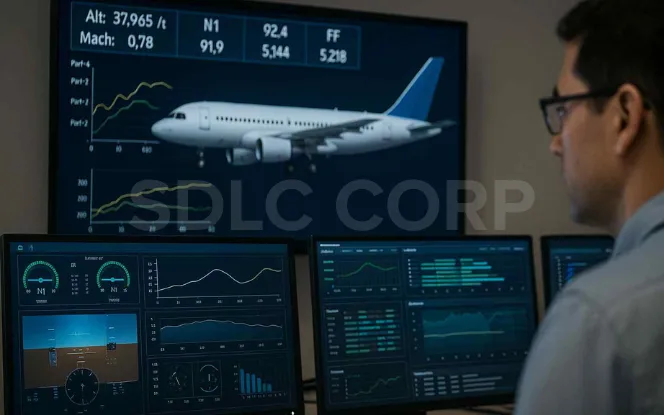
3.Applications of Generative AI in Aerospace
Generative AI is not just a futuristic idea; it is already being applied across different areas of aerospace. From aircraft design to mission planning, it is transforming the way engineers, airlines, and space agencies work. By creating faster, smarter, and more efficient solutions, AI is making aerospace safer, greener, and more innovative than ever before.
3.1 Aircraft Design and Engineering
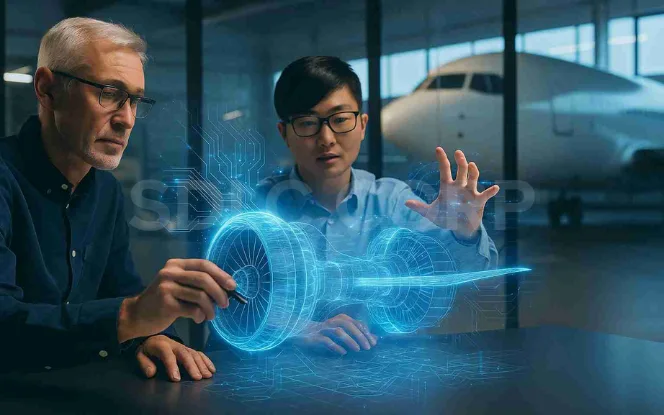
Generative AI helps design aircraft components by creating multiple variations that meet set requirements. For instance, it can design lighter engine parts that use less fuel. Because weight is one of the most important factors in aviation, even small reductions can save millions in fuel costs. In addition, AI-generated designs often discover shapes and structures that human designers may not think of, leading to more efficient solutions.
3.2 Material Optimization
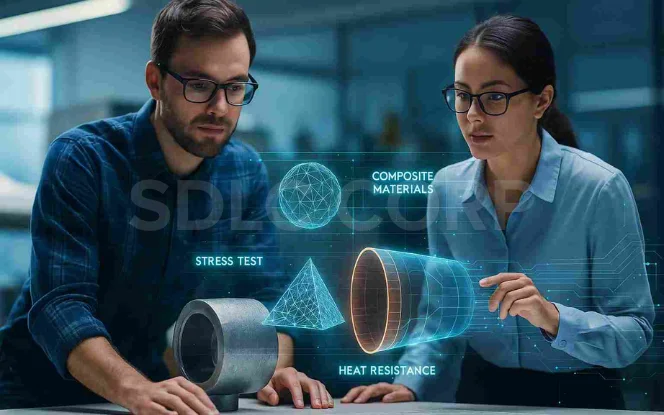
Materials used in aerospace must be both light and strong. Generative AI can test and predict the performance of advanced composites and alloys under extreme conditions such as high pressure or intense heat. Instead of waiting years for physical experiments, engineers can simulate results instantly. Consequently, they can choose the best materials much faster and with more confidence.
3.3 Predictive Maintenance
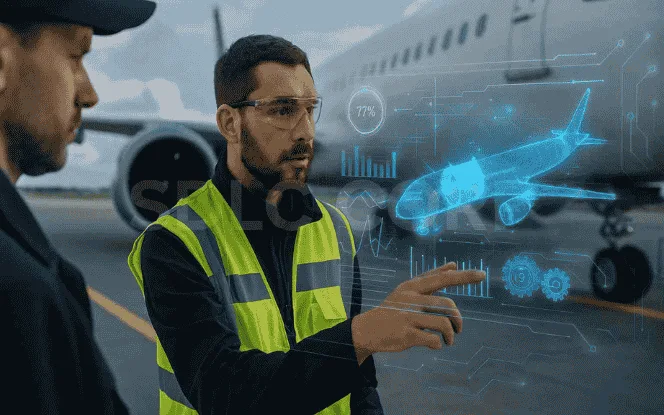
Airplanes require strict and regular maintenance to ensure safety. Generative AI can process sensor data from aircraft and predict when specific parts are likely to fail. As a result, airlines can repair or replace components before breakdowns happen. This not only prevents delays but also reduces costs and increases passenger safety.
3.4 Space Mission Planning

Space exploration is extremely risky and expensive. Generative AI can simulate thousands of mission scenarios, helping scientists find the best spacecraft designs and trajectories. Moreover, it can support astronauts with intelligent assistance during missions by providing recommendations in real time. Because of this, missions become safer, more efficient, and more likely to succeed.
3.5 Flight Path Optimization

Fuel efficiency is a top concern in aviation. Generative AI can analyze weather, air traffic, and aircraft performance data to recommend the most efficient flight routes. Therefore, airlines save money on fuel and significantly reduce carbon emissions. In addition, smoother routes improve passenger experience and reduce delays.
3.6 Defense and Military Aerospace
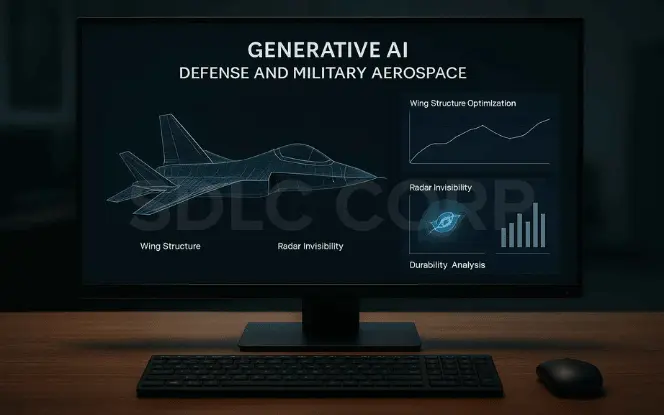
Military aerospace projects require advanced design, stealth, and safety. Generative AI supports defense projects by optimizing designs for speed, radar invisibility, and durability. For example, AI can create alternative wing structures for fighter jets that maintain strength while lowering weight. As a result, defense organizations gain efficiency, stealth, and faster deployment of new aircraft.
3.7 Design, Testing, and Documentation Support
Aircraft and spacecraft development involves extensive testing cycles and regulatory documentation. Generative AI can help draft test summaries, consolidate simulation results, and organise design reviews. In such scenarios, a Generative AI consulting company may assist teams in evaluating appropriate use cases and defining validation processes to ensure outputs meet aerospace quality requirements.
4.Benefits of Generative AI in Aerospace
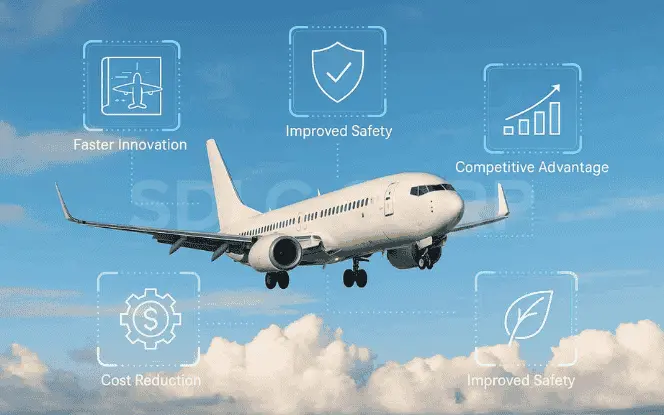
Generative AI delivers a wide range of benefits that directly impact innovation, efficiency, and sustainability.
- Faster Innovation: Design cycles that used to take years can now be completed in weeks or months.
- Cost Reduction: Because fewer errors occur, production costs and maintenance expenses go down.
- Sustainability: With lighter designs and better flight routes, emissions decrease, supporting greener aviation.
- Improved Safety: Predictive systems reduce the risk of accidents, equipment failures, and unexpected breakdowns.
- Competitive Advantage: Companies that adopt AI early can outperform rivals in terms of speed, safety, and sustainability.
5.Challenges of Generative AI in Aerospace
While the benefits are powerful, the journey to fully adopt generative AI in aerospace is not without challenges.
- Data Quality: Generative AI requires high-quality, accurate data. If the data is poor, the results may be unreliable.
- Regulatory Compliance: Aerospace is one of the most regulated industries. Therefore, integrating AI requires careful testing and approval from strict authorities.
- High Implementation Costs: Building AI systems and training staff requires a major investment. Smaller companies may struggle to afford adoption.
- Trust Issues: Engineers, pilots, and regulators must trust AI-generated solutions. Without transparency, adoption may be slower.
6.Case Studies: How Companies Use Generative AI in Aerospace
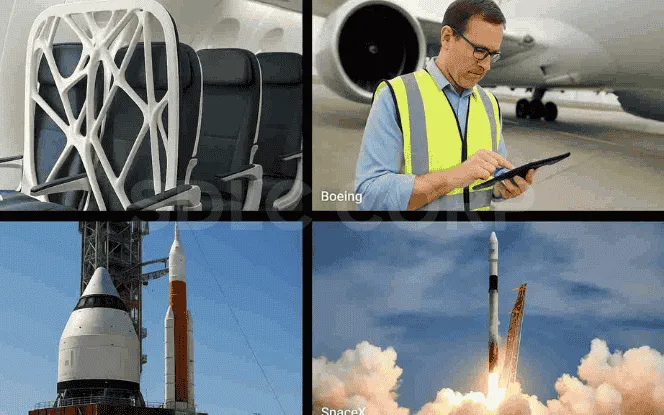
Airbus
Airbus has embraced generative AI for lightweight design. By redesigning a cabin partition with generative tools, it reduced weight by 45%. This small improvement led to significant savings in fuel consumption across fleets. Moreover, Airbus continues to apply AI to reduce emissions and create more sustainable aircraft.
Boeing
Boeing applies AI to improve predictive maintenance and optimize flight routes. With AI-driven insights, airlines can detect mechanical issues earlier and avoid costly downtime. As a result, Boeing strengthens its partnerships with global carriers while supporting safer operations.
NASA
NASA has used generative AI in mission planning, spacecraft design, and advanced material testing. For example, it simulates spacecraft trajectories to reduce mission risk. In addition, AI assists in designing components for Mars missions that must withstand extreme environments.
SpaceX
SpaceX relies on AI-driven simulations to optimize rocket designs and improve launch success. By reducing testing cycles, it saves both time and resources. Furthermore, AI supports the development of reusable rockets, which makes space travel more sustainable and cost-efficient.
7.Generative AI and Sustainability in Aerospace
Sustainability is one of the biggest challenges in aerospace. Generative AI supports this goal by making aircraft lighter, improving fuel efficiency, and reducing emissions. In addition, AI helps airlines choose flight paths that avoid unnecessary fuel waste.
Moreover, AI supports the design of eco-friendly materials that can be recycled or reused. As a result, the entire lifecycle of an aircraft becomes greener. Because climate change is a global concern, AI in aerospace plays an important role in creating a sustainable future for aviation.
8.Economic Impact and Workforce Transformation
Generative AI is not only changing aerospace technology but also reshaping its economy and workforce. Because aerospace projects require billions in investment, even small improvements in design efficiency or fuel savings create huge financial benefits. For example, reducing the weight of aircraft components leads to lower fuel costs, which then helps airlines save millions of dollars annually. Similarly, predictive maintenance reduces downtime, allowing airlines to fly more frequently and increase revenue.
Moreover, AI-driven processes reduce the need for repetitive manual tasks, which allows human engineers to focus on more creative and strategic work. Instead of spending months testing designs manually, teams can rely on AI to generate solutions and then refine them. This shift does not remove human jobs; rather, it transforms them into higher-value roles that require creativity, oversight, and decision-making.
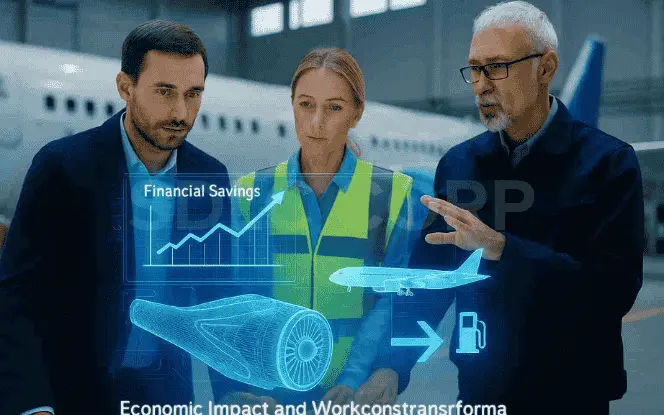
In addition, aerospace suppliers benefit from AI adoption because optimized designs require fewer raw materials and less waste. Consequently, manufacturing becomes cheaper and more sustainable, which strengthens the entire supply chain.
Finally, governments and defense organizations also gain from the economic benefits of generative AI. With more efficient designs and operations, public spending on aerospace projects becomes more cost-effective. As a result, generative AI supports national competitiveness while creating opportunities for new industries and high-skilled jobs.To explore more digital solutions that enhance this sector, check out our insights on Odoo for aerospace and defense.
9.Future Possibilities of Generative AI in Aerospace
The future of aerospace will likely be shaped by a combination of generative AI, quantum computing, and digital twins. Together, these technologies will allow engineers to create virtual copies of aircraft and spacecraft, test them in simulated environments, and predict performance in real time.
We may also see AI-designed aircraft that operate autonomously, spacecraft that self-correct their trajectories during missions, and colonies on Mars planned with AI-generated structures. In fact, the dream of interplanetary travel may become possible much sooner because of AI-driven innovation.
Therefore, the future of aerospace is not only exciting but also deeply tied to the growth of generative AI.
10. Integration with Aerospace AI Platforms
Generative AI is often used alongside predictive maintenance, sensor analytics, and simulation tools. Integrating these components requires reliable infrastructure and clear data pipelines. Aerospace organisations may rely on AI development services to connect generative models with existing platforms while maintaining traceability and system performance.
11. Ongoing Development and Technical Maintenance
Aerospace platforms evolve as technologies, standards, and mission requirements change. Generative AI systems must adapt accordingly without compromising safety. Some organisations choose to hire generative AI developers to maintain models, update integrations, and ensure systems remain aligned with operational and compliance needs.
Conclusion
Generative AI is transforming aerospace in ways that were once impossible to imagine. From designing lighter components to planning safer space missions, it is making aviation and space exploration faster, safer, greener, and more affordable. Although there are challenges such as cost and regulation, the benefits far outweigh the risks.
As we move forward, generative AI will continue to drive innovation across the aerospace industry. It will support airlines, space agencies, and defense projects in creating safer skies and reaching new frontiers in space. In short, generative AI is shaping the future of aerospace, and its impact will only grow stronger.
If your organization is ready to embrace this change, you can hire generative AI developers to bring these innovations into your aerospace projects.
FAQ'S
What is generative AI in aerospace?
Generative AI in aerospace refers to the use of artificial intelligence systems that can not only analyze data but also create new designs, suggest solutions, and optimize processes. Instead of relying only on human input, it uses algorithms to simulate thousands of possibilities and find the best outcome. In aerospace, this means designing lighter aircraft parts, testing new materials, planning space missions, predicting maintenance needs, and even optimizing flight paths. Because of its ability to handle complex variables at once, generative AI is becoming an essential tool for modern aviation and space exploration.
How does generative AI help in aircraft design?
Generative AI speeds up aircraft design by generating multiple options based on specific requirements such as aerodynamics, weight, and safety. Engineers can then compare these options and choose the most effective one. For example, AI can propose new wing shapes or engine components that improve fuel efficiency and reduce costs. It can also simulate how these designs would perform in real-life conditions, which saves years of testing. This not only reduces development time but also helps companies build more advanced, eco-friendly, and safer aircraft.
Can generative AI improve aerospace safety?
Yes, generative AI plays a major role in improving safety across the aerospace industry. It can analyze sensor data from airplanes in real time to predict possible failures before they happen. This predictive maintenance reduces the risk of accidents caused by unexpected technical issues. In addition, AI supports pilots and astronauts by running simulations and offering decision-making assistance during emergencies. By reducing human error and ensuring better oversight, generative AI creates safer skies and more reliable spacecraft missions.
Which aerospace companies use generative AI?
Several leading aerospace organizations are already using generative AI. Airbus uses it for designing lighter aircraft parts that save fuel. Boeing applies AI for predictive maintenance and flight path optimization. NASA relies on it for planning complex space missions and testing new spacecraft materials. SpaceX uses AI-driven simulations to design reusable rockets and improve launch success rates. Beyond these giants, many startups and aerospace suppliers are also adopting generative AI to stay competitive in the global market.
What are the main challenges of using AI in aerospace?
While generative AI offers huge benefits, it also comes with challenges. One major issue is regulation because aerospace is a highly controlled industry where safety standards are strict. Another challenge is the cost of adoption, since building AI systems and training teams requires significant investment. Data quality is also crucial because poor data leads to unreliable results. Finally, trust remains a challenge, as engineers and regulators must be confident in AI-generated solutions before they are used in real operations. Overcoming these barriers will be key to widespread adoption.


